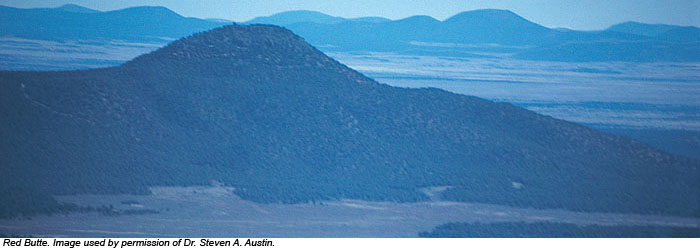
30 Years Later, the Lessons from Mount St. Helens
On May 18, 1980, a tremendous landslide on the northern side of Mount St. Helens in Washington state uncapped a violent volcanic eruption, completely altering the surrounding landscape. It is the most studied volcano in history and has reshaped thinking regarding catastrophic earth processes.

Rapid Rifting in Ethiopia Challenges Evolutionary Model
Volcanic activity in 2005 accompanied the formation of a deep, wide rift in Ethiopia on part of the 4,000-mile-long north-to-south trending Great Rift Valley fault. Studies show that the injection of mantle material that “unzipped” the earth along the fault operated the same way as similar material does in less-accessible undersea rifts.

Diamond Research Points to a Recent Formation
Most diamonds are formed at depths of 150 or so miles. Deep diamonds, however, formed at depths of over 400 miles. The discovery of a new cache of deep diamonds near Eurelia, Southern Australia, has caused some researchers to speculate that they formed much more recently than previously believed.

Red Butte: Remnant of the Flood
Sixteen miles from Grand Canyon's south rim, a cone-shaped butte rises like a lone sentinel 1,000 feet above the Coconino Plateau floor. Thousands of tourists rush past on Arizona Highway 64 without giving it another thought, yet this humble little hill testifies to a remarkable past.



